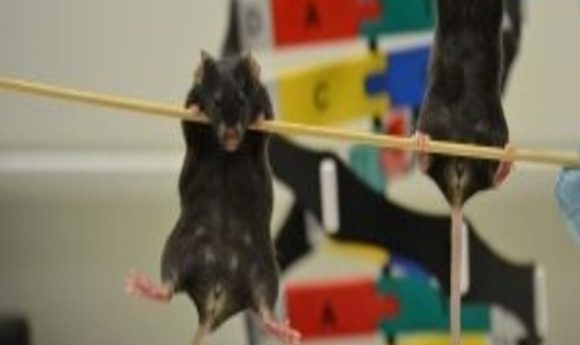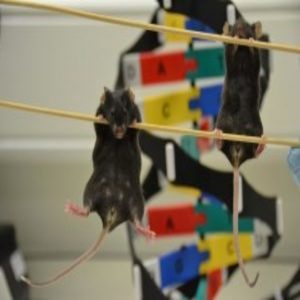Why can XY mammals develop female sex organs?

The removal of a small section of non-coding DNA may help explain why mammals with XY chromosomes can develop ovaries instead of testes.

Male XY mouse with female sex organs (left) and female XX mouse (right). Credit: Greta Keenan, Francis Crick Institute.
A team of researchers from the Francis Crick Institute (London, UK) have shown that male mice can grow ovaries, as opposed to testes, when a small region of non-coding DNA is removed. Ninety-eight percent of DNA is thought be non-coding, with only 2% containing genes that encode proteins. However, non-coding sections of DNA are increasingly believed to be more important than initially given credit for.
At a particular embryonic developmental stage, the SOX9 protein initiates the transformation of the sex organs into testes and guides the rest of the embryo to become male. The amount of SOX9 protein is controlled by the SRY protein, which is encoded by the Sry gene – located on the Y chromosome. Hence, males usually develop testes as they possess a Y chromosome and females do not. Also, if there is not enough SOX9 protein, mammals with XY chromosomes will develop ovaries.
This study, published in Science, has demonstrated that a small piece of non-coding DNA, named Enh13, boosts the production of the SOX9 protein in order to trigger testes development. When Enhancer 13, or Enh13, which is over half a million bases away from the Sox9 gene, was removed by the researchers; the male XY mice developed ovaries instead of testes.
In 1991, a female XX mouse, named Randy, developed male sex organs after the introduction of the Sry gene during embryonic development.
“We’ve come a long way since Randy, and now for the first time we’ve demonstrated sex reversal after changing a non-coding region of DNA rather than a protein-coding gene,” explained Robin-Lovell Badge (Francis Crick Institute), senior author of the paper. “We think Enh13 is probably relevant to human disorders of sex development and could potentially be used to help diagnose some of these cases.”
Nitzan Gonen (Francis Crick Institute), first author of the paper, added, “Our study also highlights the important role of what some still refer to as ‘junk’ DNA, which makes up 98% of our genome. If a single enhancer can have this impact on sex determination, other non-coding regions might have similarly drastic effects. For decades, researchers have looked for genes that cause disorders of sex development but we haven’t been able to find the genetic cause for over half of them. Our latest study suggests that many answers could lie in the non-coding regions, which we will now investigate further.”

